Kennedy Space Center
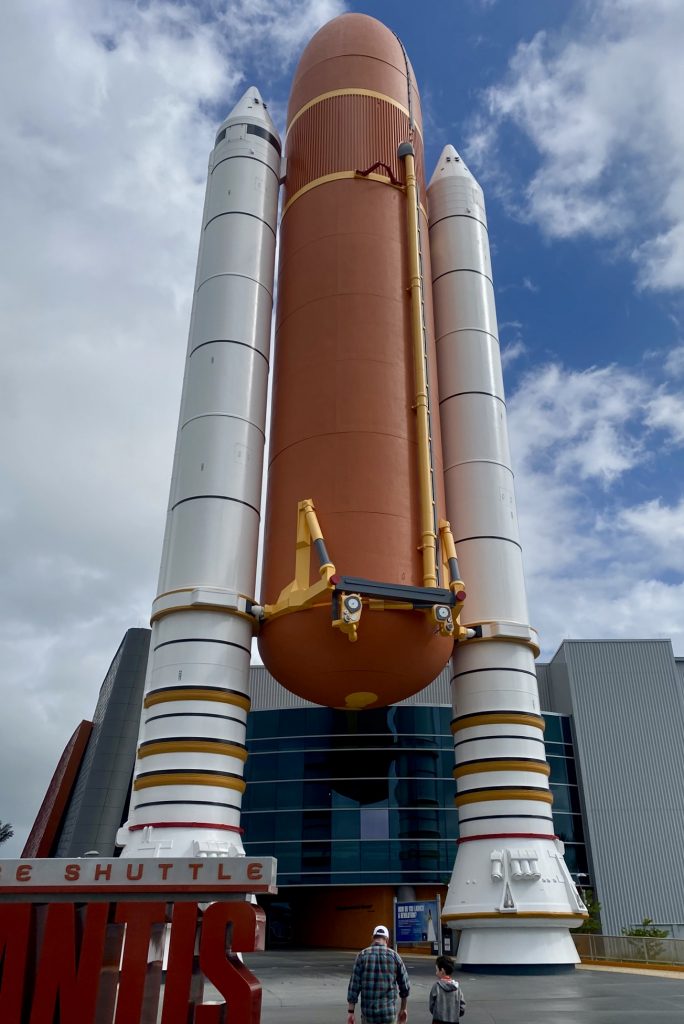
Look up! proclaimed the title of the visitor guide for the NASA complex on Cape Canaveral, where powerful rockets are launched. On two visits to the Kennedy Space Center I did a lot of looking up. On February 15, Shelby, Sean, Stephen (12), Thomas (9), and I drove two-and-a-half hours north and spent seven hours being amazed. Four days later, Steve and I accompanied Lilli and Violet and her friend Elizabeth (both 10) on a similar visit. Both days were packed with fun, learning, and nostalgia. I recalled the triumphs:
- May 5, 1961, when my high school band director pre-empted a rehearsal so that we could all watch a brief live event on a small black-and-white TV. Alan Shepard was the first American in space! We were all so proud!
- September 12, 1962, in Rice Stadium, when Steve and I heard John F. Kennedy announce the goal of landing a man on the moon and returning him safely to earth within the decade. (Snippets of that speech were included in several videos at the Space Center. My family members rolled their eyes every time I exclaimed “I was there!”)
- July 20, 1969, when the Eagle landed on the Moon and we watched a dream come true.
- July 20, 2019, celebrating the 50th anniversary of the Moon Landing with Violet.
Alan Shepard, first American in space Michael Collins, Neil Armstrong morning & Buzz Aldrin “The Eagle Has Landed”
We remembered the tragedies, too and saw memorials to many who had lost their lives:
- January 27, 1967: Gus Grissom, Ed White, and Roger B. Chaffee died in a fire that engulfed the Apollo One capsule before launch.
- January 28, 1986, when the Space Shuttle Challenger broke apart 73 seconds into its flight, killing all seven crew members aboard.
- February 1, 2003, when the Space Shuttle Columbia disintegrated as it re-entered the atmosphere, killing all seven crew members.
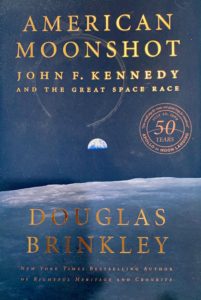 Most of all, as I relived the early days of NASA, I was nostalgic for a time when our country shared an ambitious vision and worked together to make it come true. In his 2019 book, American Moonshot: John F. Kennedy and the Great Space Race, Rice Professor Douglas Brinkley puts space achievements in historical perspective:
Most of all, as I relived the early days of NASA, I was nostalgic for a time when our country shared an ambitious vision and worked together to make it come true. In his 2019 book, American Moonshot: John F. Kennedy and the Great Space Race, Rice Professor Douglas Brinkley puts space achievements in historical perspective:
In its fast-paced history, the U.S. government had completed the Erie Canal in 1825, the Panama Canal in 1914, and the Hoover Dam in 1935–each of them beginning as an engineering challenge and ending as a symbol of national indomitability and excellence. Conquering these supposedly impossible tasks lifted the nation’s spirits, advanced knowledge within an array of professions, and produced immediate innovation-based economic benefits that justified their high federal price tags.
Aware of historical timing, Kennedy sought a manned-space leapfrog that would transform the goal of expanding human knowledge into irrefutable proof of American exceptionalism–humbling the Soviet Union without turning the Cold War into a shooting war. If the mission he sought could, in effect, lead to long-term peace with the Kremlin, it would more than cover whatever cost it incurred.
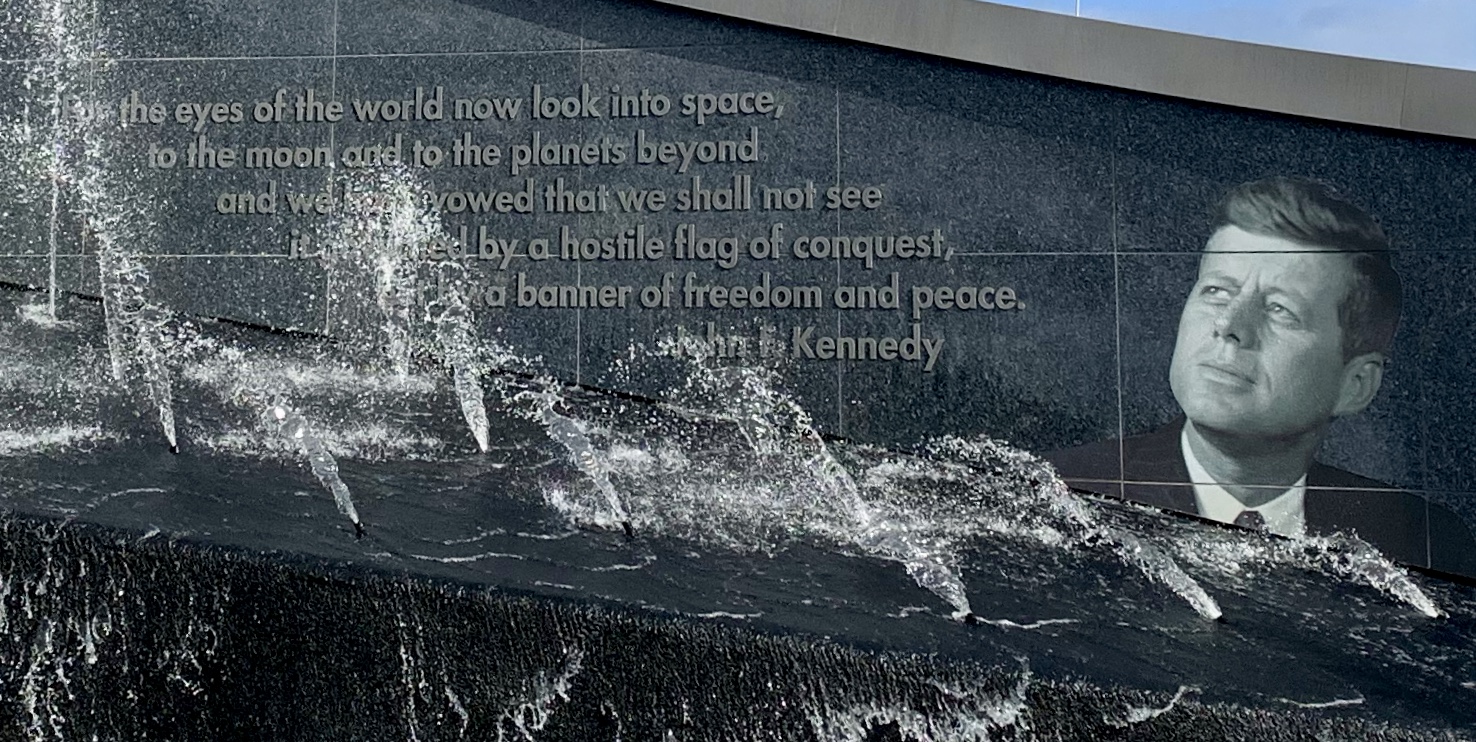
The Space Center Complex is operated for NASA by Delaware North and is entirely visitor-funded. Daily fees are expensive, but we all agreed that our full day was worth what we paid (about $80 each, compared with $100+ each for a day at Disney World). The $80 price included extra fees to “Dine with an Astronaut,” an experience that provided fascinating insights into what it’s like to qualify as an astronaut, travel in space, and readjust to the Earth. 
On my first trip with Shelby’s family, we heard Norm Thagard, born in 1943, recount how he got selected as an astronaut. As a jet pilot he had flown 163 combat missions in Vietnam; he then earned advanced degrees in medicine and electrical engineering. Thagard completed five missions on the International Space Station, logging 140 days in space. He spoke Russian well enough to be the cosmonaut/researcher on the Russian Mir-18 mission in 1995. His specialty was conducting experiments to document the effects of space travel on human physiology. I was pleased that Stephen and Thomas, who had visited the Johnson Manned Spacecraft Center in Houston with Sean’s parents, listened intently and made connections with what they had already learned.
Four days later, we had lunch with Astronaut Brian Duffy (and over 100 other visitors) and managed to snap this photo. Brian was born in Boston in 1953. A veteran of four space flights, he has logged a total of 40 days, 17 hours, 34 minutes and 59 seconds in space. He shared details we could all relate to:
- Astronauts love tacos and burritos, because tortillas keep the ingredients together.
- It takes a few days to learn to move slowly in a weightless environment; eager newbies crash into things until they learn.
- It also takes a few days to learn how to walk on earth again after floating around in space. Legs feel really heavy when you return–he demonstrated the walk.
The best thing about being in space, Duffy told us, was seeing the beauty of the Earth without borders. But he noted a paradox: astronauts see a beautiful planet, but cannot experience it with all their senses. They miss the wind, the scents, and the sounds. He said that looking away from the Earth into infinity, the human brain simply cannot perceive the enormity of the Universe. After each of his four missions, he was glad to get back home.
Details the astronauts related in person pricked our interest in displays showing how astronauts eat, sleep and exercise.
On Saturday after Dining with an Astronaut, we had to wait in line almost an hour for a Bus Tour of the launch sites. For Wednesday’s visit we got in line for the Bus Tour as soon as we got through the gate at 9:00 am, and waited only 15 minutes. That allowed time to visit the Shuttle Launch Experience, that we had missed on Saturday. We still didn’t see everything we could have, but I believe that we will all remember the Space Center for a long time, perhaps even nostalgically.
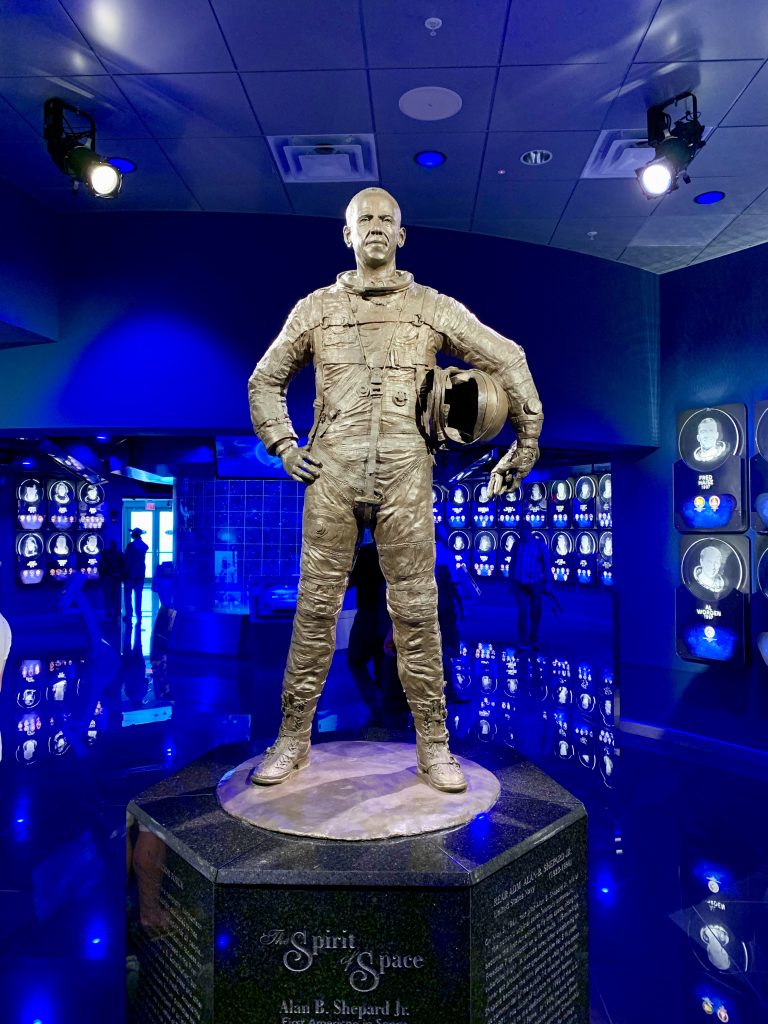
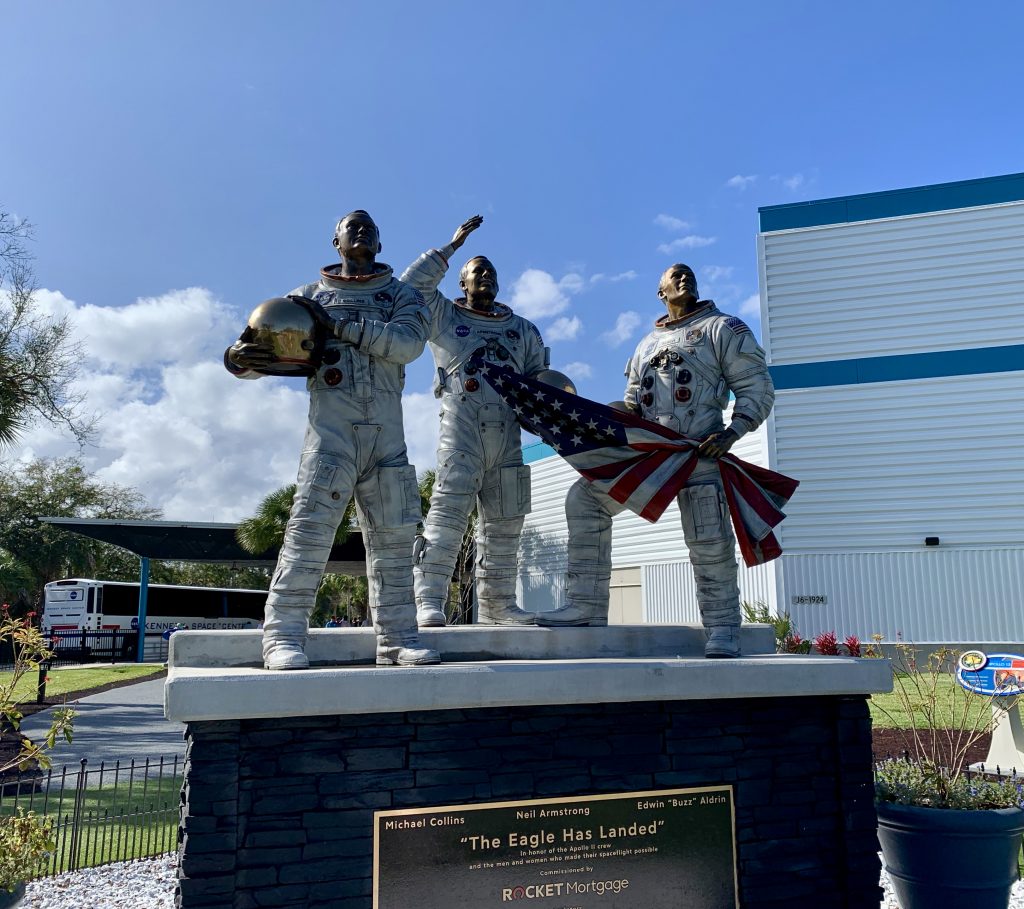
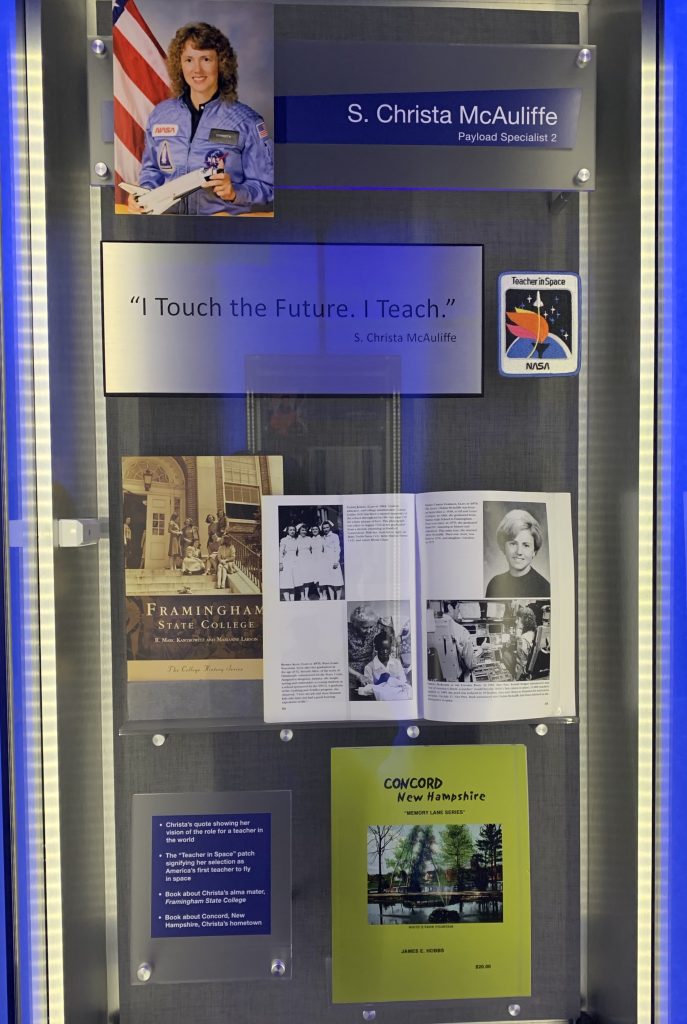
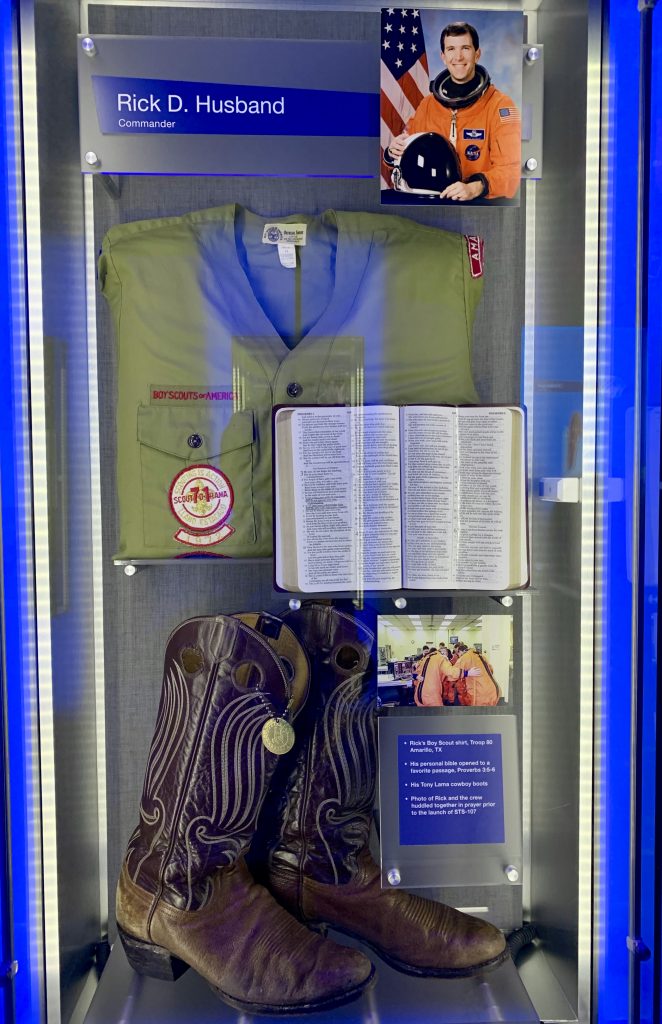
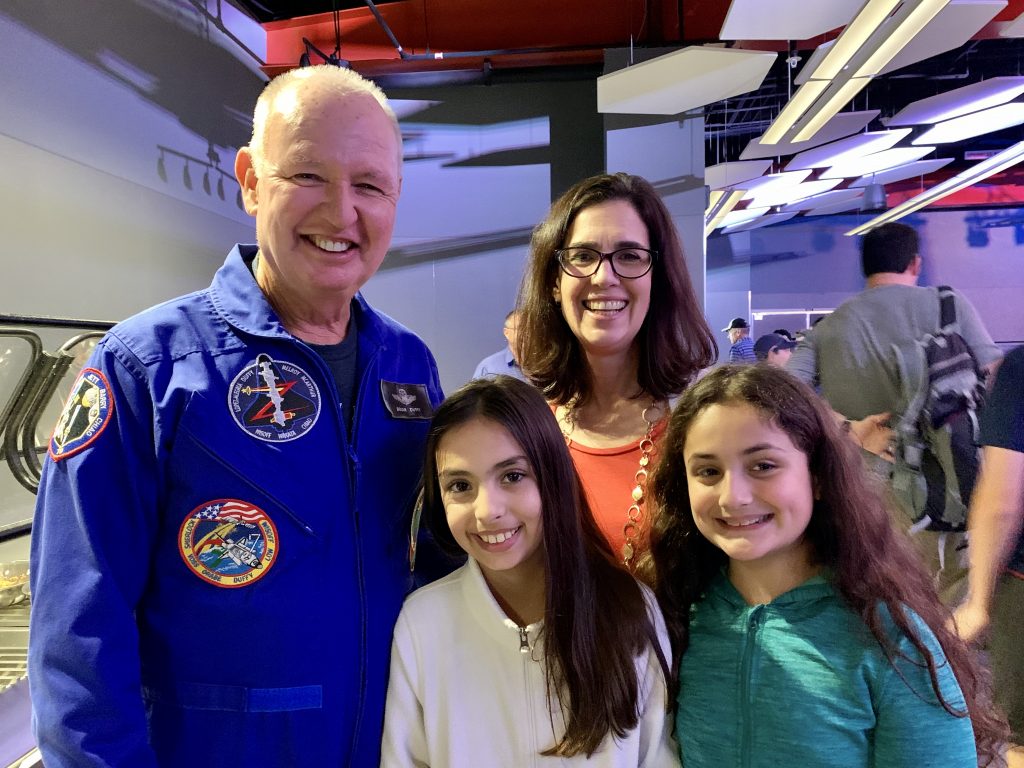
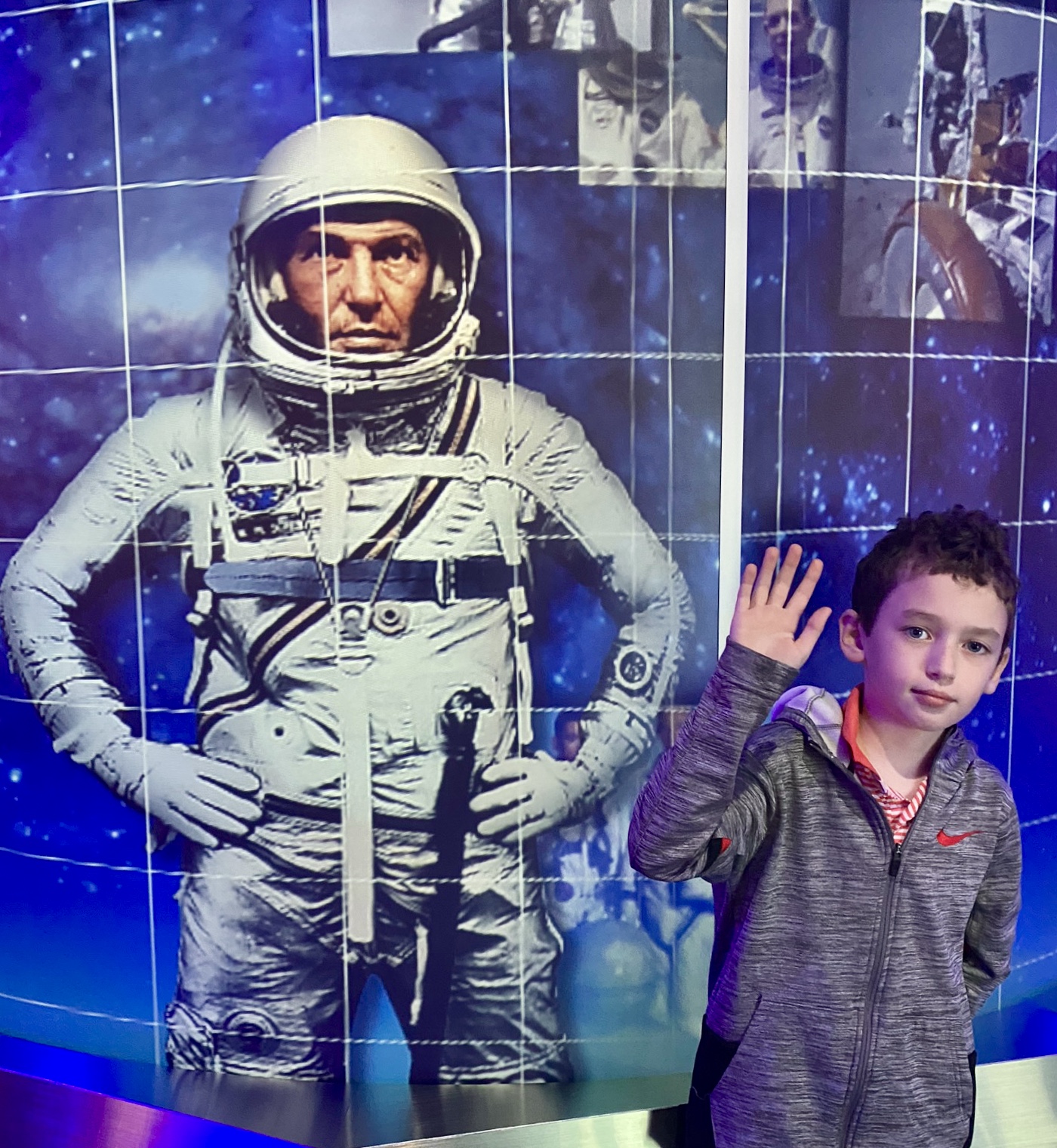
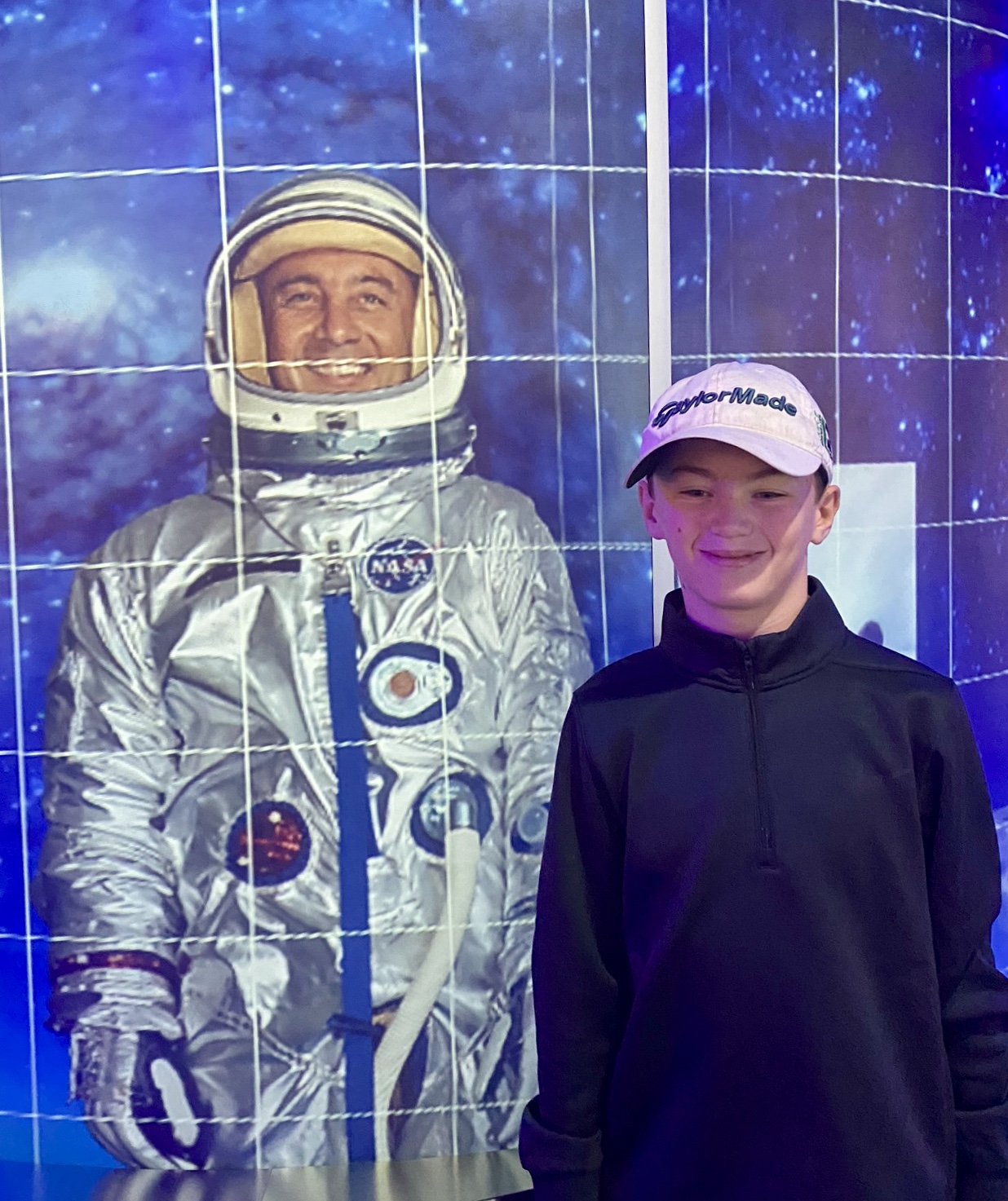
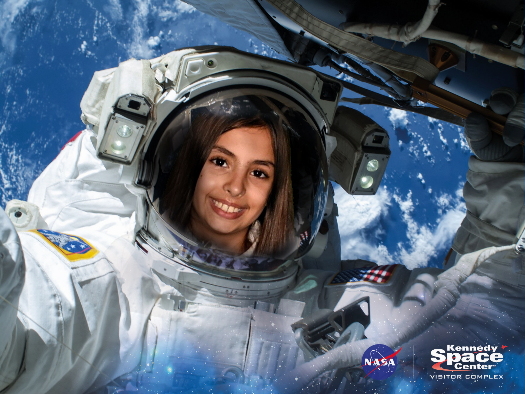
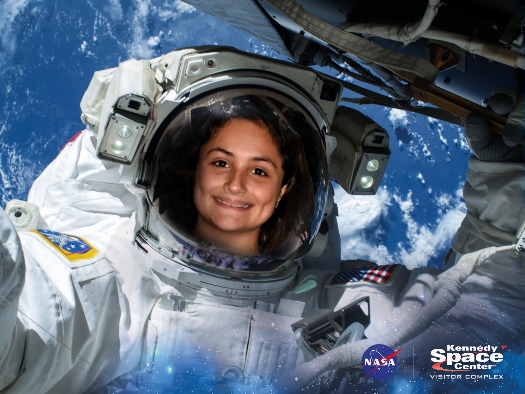
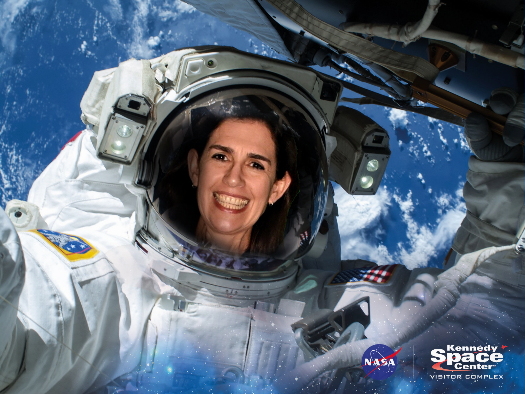
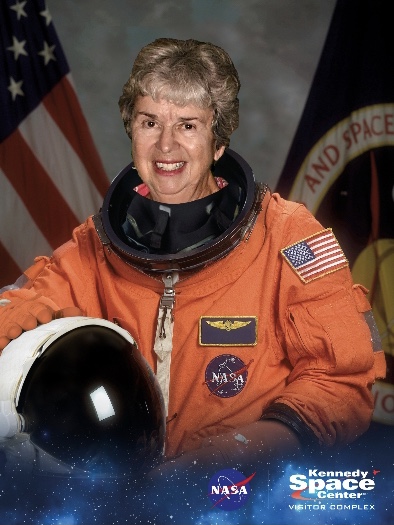
Leave a Reply